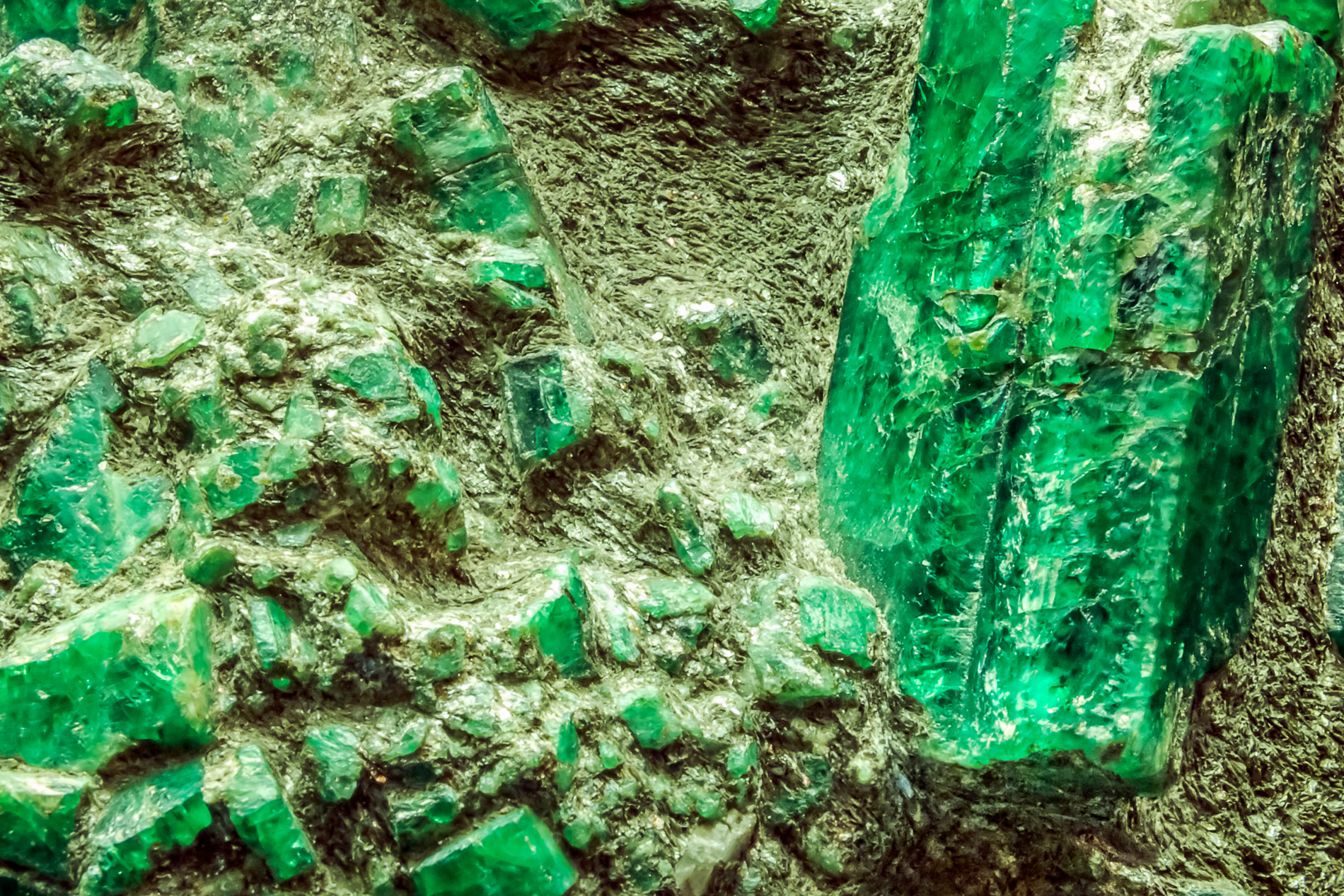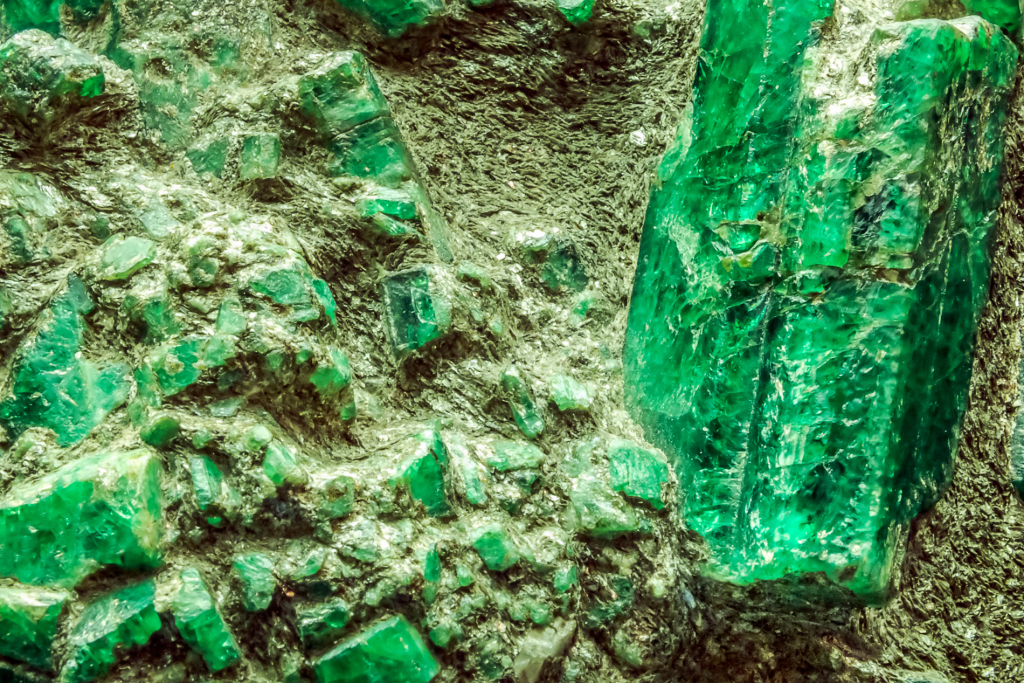Gemstones captivate us with their stunning colors, but behind these vibrant hues lies fascinating science. The colors we see in gemstones are primarily the result of specific chemical elements and the way they interact with light. Different elements and minerals create a variety of unique colors, from the deep blue of a sapphire to the fiery red of a ruby. In this blog, we’ll explore the science behind gemstone colors and what makes each one so special.
1. Chromophores: The Key to Gemstone Colors
The primary cause of color in gemstones is the presence of chromophores, which are specific elements or compounds that absorb certain wavelengths of light. When light passes through or reflects off a gemstone, the chromophores absorb some colors and allow others to be transmitted, creating the colors we see.
- For example, iron, titanium, and chromium are common chromophores that give gemstones their characteristic hues.
These trace elements are present in varying concentrations, and even slight differences can result in dramatic variations in color.
2. How Elements Affect Gemstone Colors
Each element has a unique impact on a gemstone’s color. Let’s delve into how some of the most common elements create specific gemstone colors:
- Chromium: This element is responsible for the rich red color in rubies and the lush green in emeralds. In rubies, chromium absorbs light in the blue and yellow regions of the spectrum, leaving red as the dominant color. In emeralds, chromium absorbs certain wavelengths of light, creating a vivid green hue.
- Iron: Iron is one of the most versatile chromophores, influencing the color of various gemstones. It gives amethyst its purple color and contributes to the blue hue in sapphires. When iron is present in different oxidation states, it can produce a wide range of colors, including yellow in citrine and brown in topaz.
- Titanium: This element, when combined with iron, produces the iconic blue color in sapphires. In combination with other trace elements, titanium can also give blue diamonds their rare color.
- Copper: Known for creating the striking blue and green colors in turquoise, copper is another key element in gemstone coloration. It also contributes to the vibrant blue hues in Paraíba tourmaline, one of the most sought-after gemstones.
- Manganese: Manganese is responsible for the pink color in morganite and the violet hues in sugilite. Its presence can also give certain varieties of spinel a pinkish tone.
3. Allochromatic vs. Idiochromatic Gemstones
Gemstones can be classified into two categories based on how they obtain their color: allochromatic and idiochromatic gemstones.
- Allochromatic gemstones are colorless in their pure form, and they get their color from trace impurities or elements. For example, pure corundum is colorless, but when chromium is added, it becomes a red ruby. Similarly, when titanium and iron are present, corundum becomes a blue sapphire.
- Idiochromatic gemstones, on the other hand, get their color from essential elements in their chemical structure. For example, peridot contains iron in its chemical makeup, which gives it its characteristic green color.
4. Light and Color: The Role of Absorption and Reflection
The color of a gemstone is also influenced by the way it interacts with light. When light hits a gemstone, some wavelengths are absorbed by the chromophores, while others are reflected back to the eye. The colors that are not absorbed are what we perceive.
- Selective absorption is the key process at work, where certain wavelengths of light are absorbed more than others. For instance, in a ruby, chromium absorbs green and blue light, reflecting red to the eye.
- Gemstone cut and clarity also affect how light interacts with the stone. A well-cut gemstone can enhance the way light reflects within it, intensifying its color and brilliance.
5. Pleochroism: A Gemstone’s Color Changing Ability
Some gemstones, like tanzanite and alexandrite, exhibit a property called pleochroism, meaning they show different colors when viewed from different angles. This occurs because light is absorbed in different amounts along different crystal axes of the gemstone.
- Alexandrite is famous for its ability to change color depending on the light source, shifting from green in daylight to red under incandescent light. This rare phenomenon adds to its allure and value.
A World of Colors Shaped by Science
The colors of gemstones are a dazzling result of complex chemical interactions between elements and light. From the red of rubies to the blue of sapphires, each gemstone tells a story of nature’s artistry, shaped by the presence of specific elements and minerals. Understanding the science behind these colors not only enhances our appreciation for gemstones but also deepens our connection to their beauty and rarity.
Next time you admire a gemstone, remember that its vibrant colors are the result of millions of years of geological processes and the subtle interplay of elements within the Earth.




